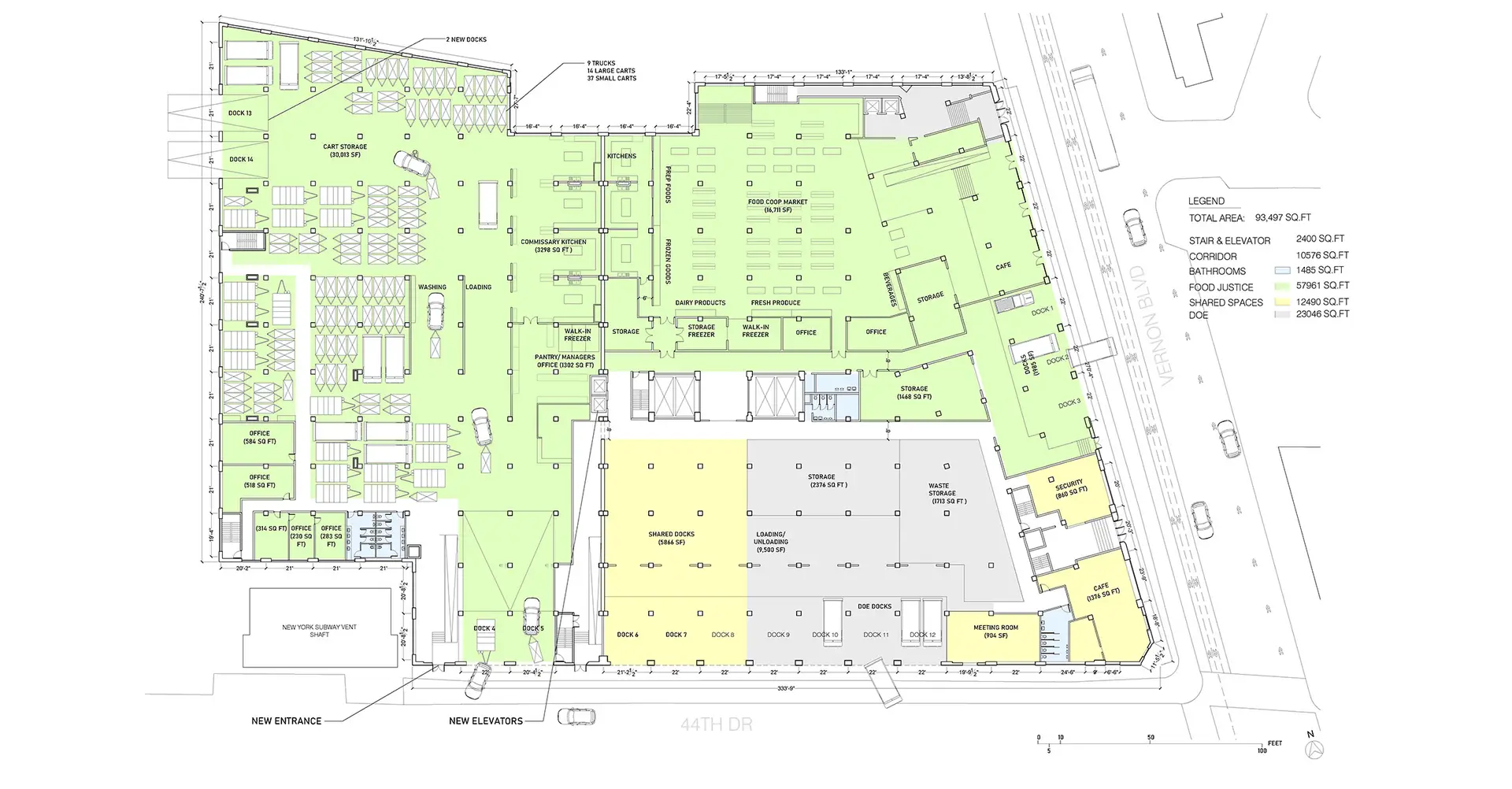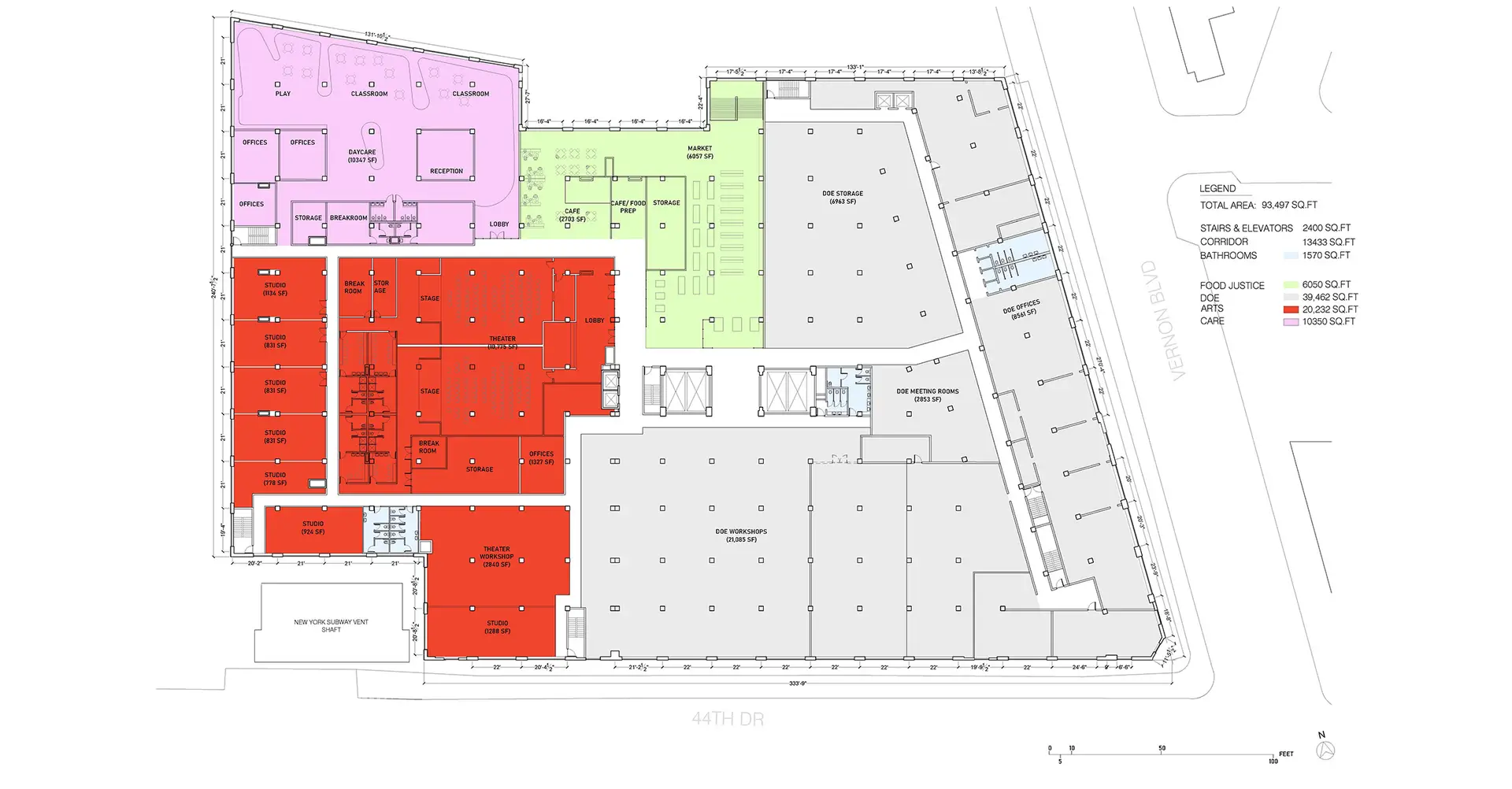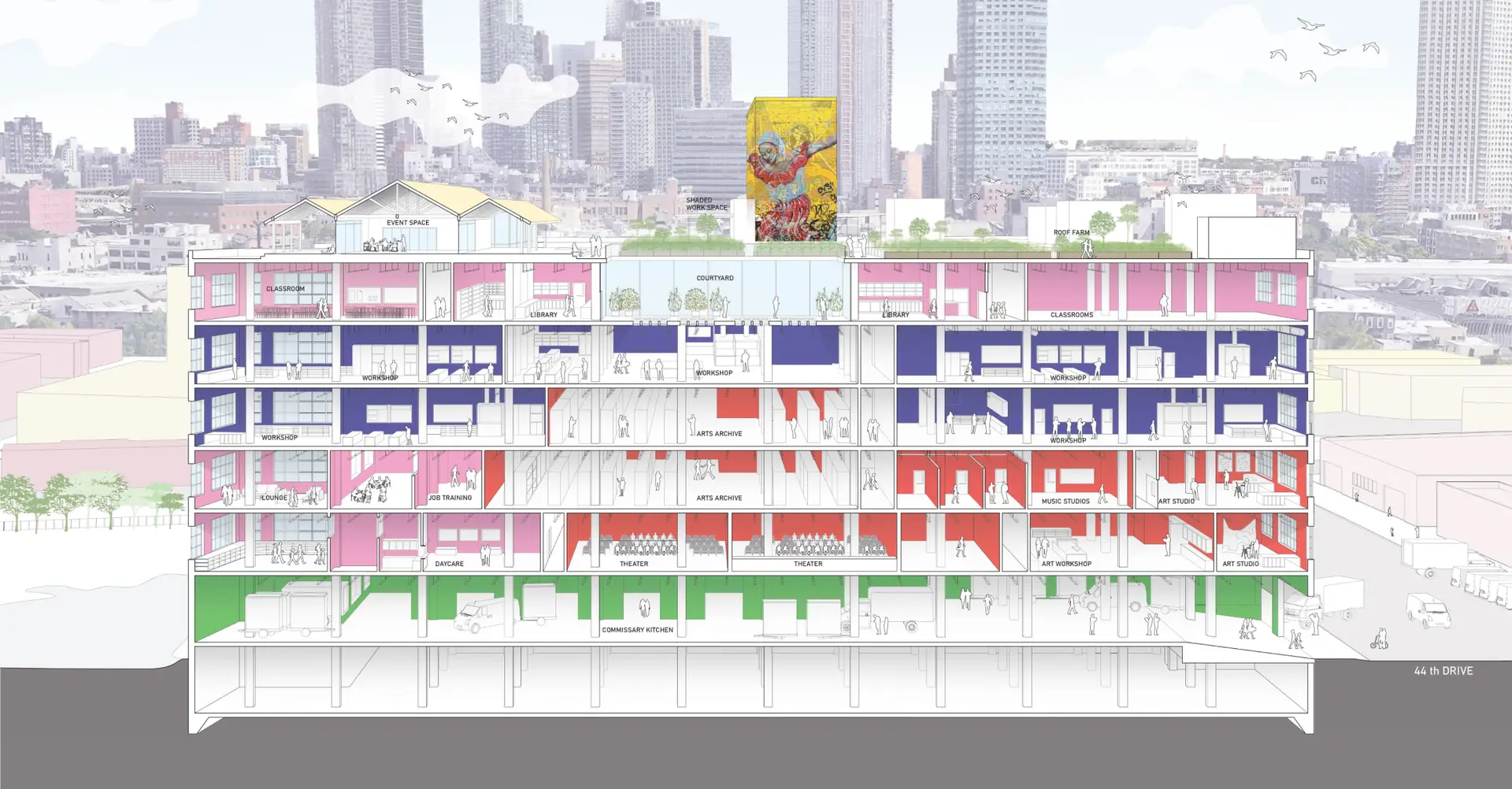

Queensboro People’s Space
Queens, New York.
2022
The Queensboro People’s Space Report seeks to obtain a publicly owned property, the large six story Department of Education Building at the corner of Vernon Boulevard and 44th Drive in Long Island City, Queens. The Building will be converted into a Community Land Trust stewarded by the Western Queens Community Land Trust. The proposed building will house an array of manufacturing, arts, food, and care spaces providing much needed affordable space in Long Island City. With potential tenants like the Street Vendor Project, Indie Collect, Astoria Wood Workers Collective, Hell Gate Farms and many other local businesses combined with spaces for learning like, libraries, classrooms, and a daycare facility. The Queensboro People’s Space seeks to usher in a new economy of cooperation in Long Island City by providing deeply affordable spaces for local businesses and community members.
Project Team: Nandini Bagchee, Ngawang Tenzin.
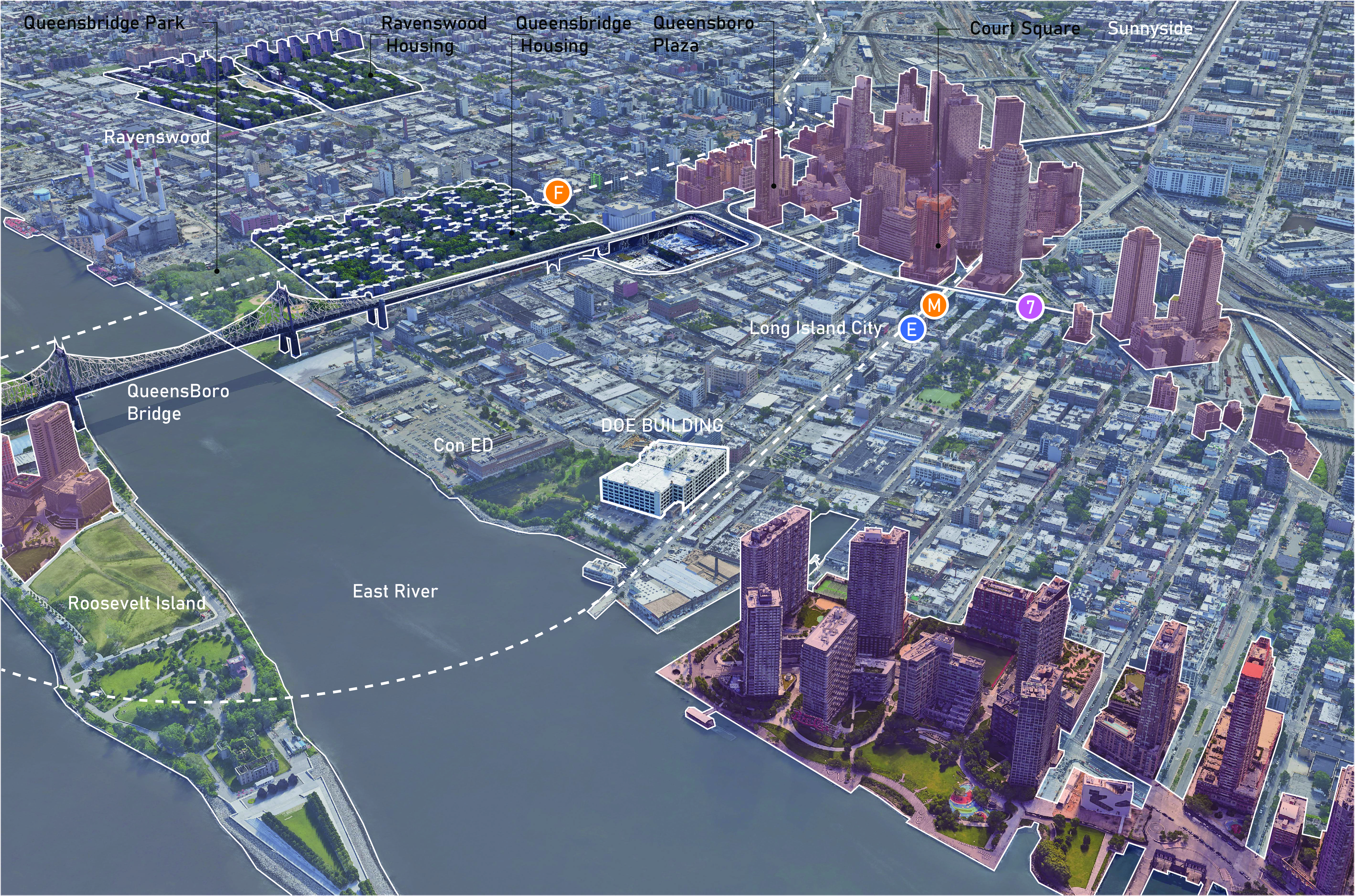
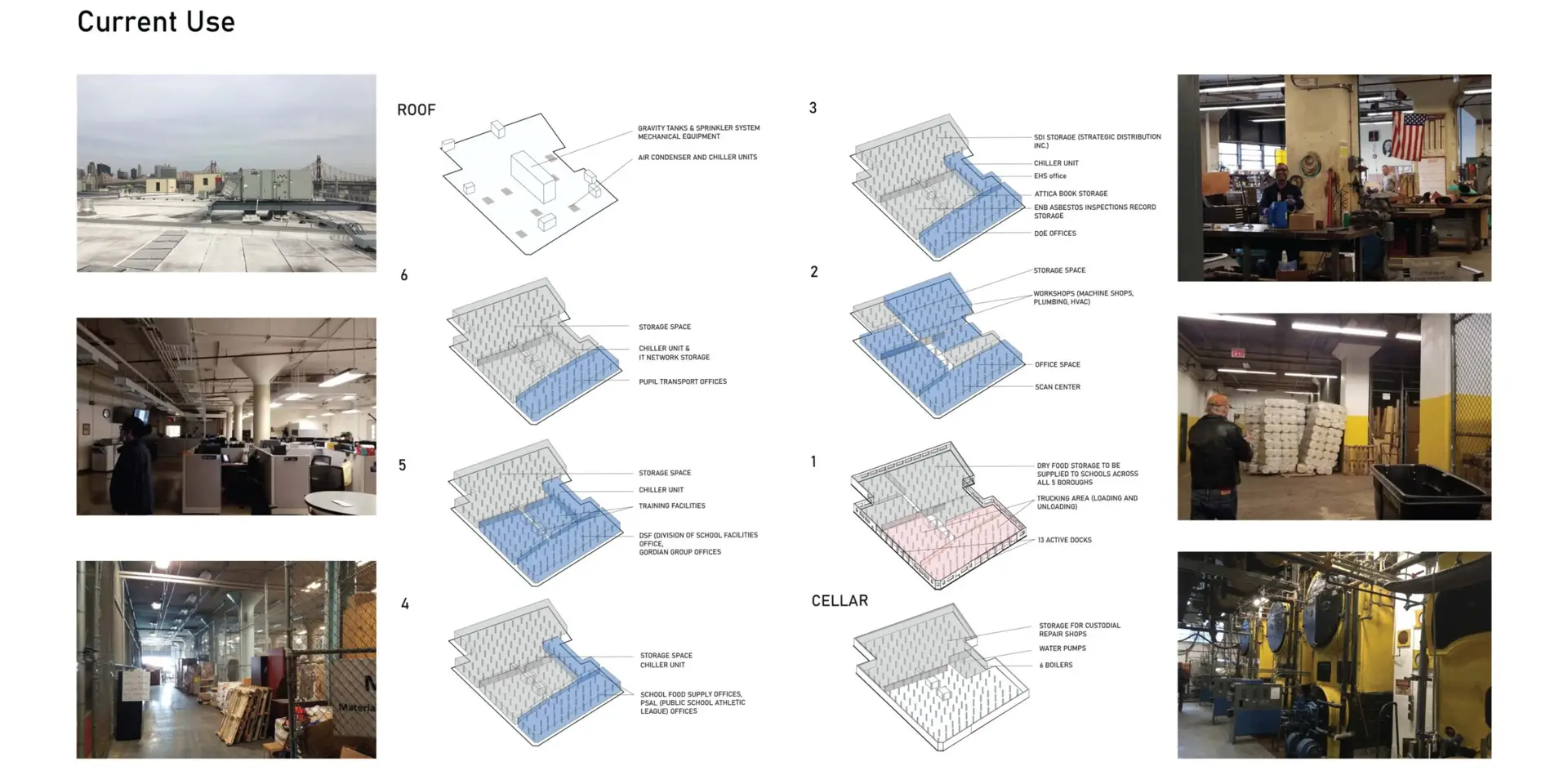

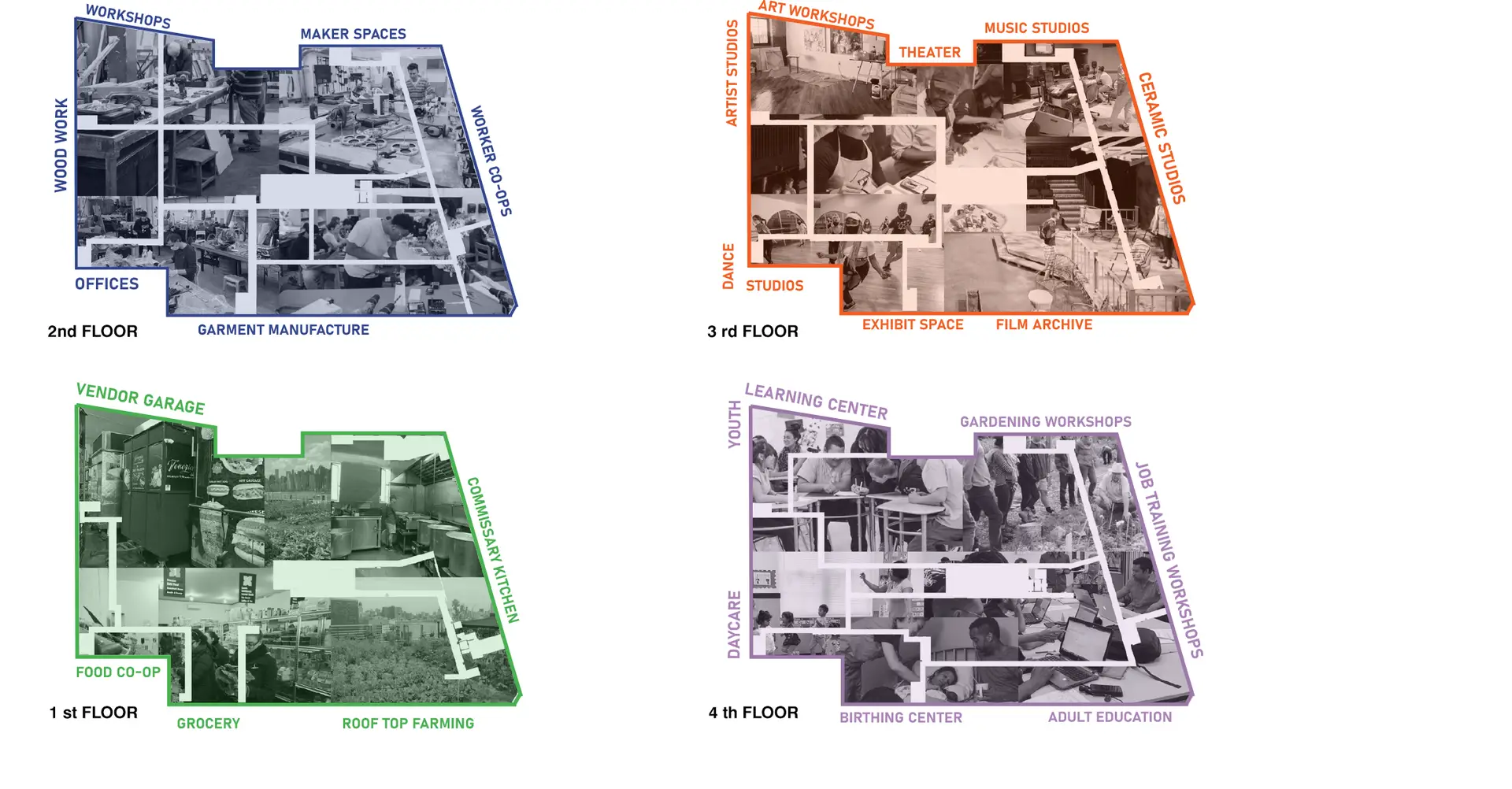
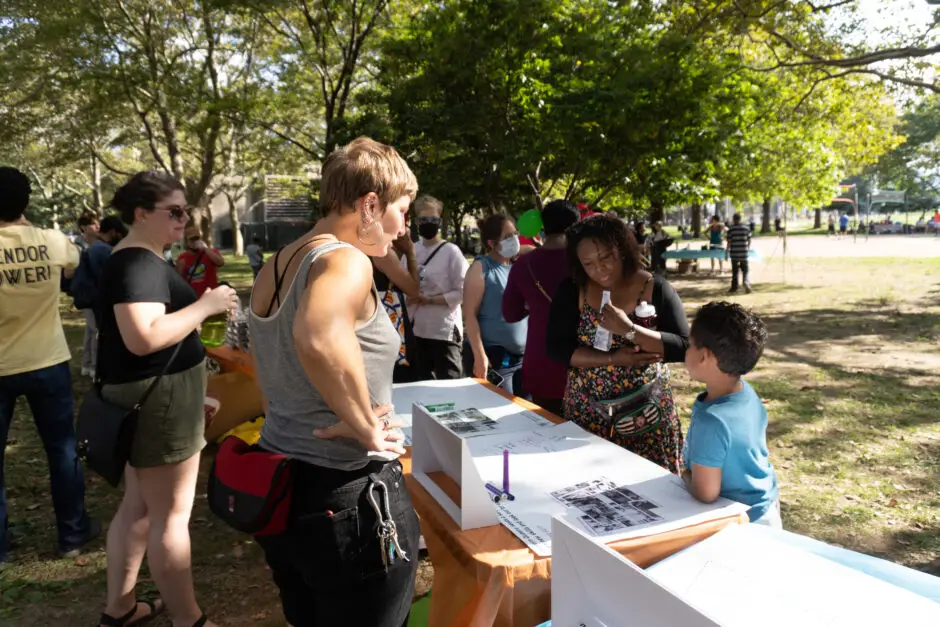
The design process began with a series of community meetings held via Zoom. The meetings were attended by a diverse range of participants—from artists and makers to food sovereignty organizations and grassroots service providers, making space for everyone’s unique needs and voices. Each participant brought their own specific requirements to the table, and all this input was essential in shaping the design.
Community involvement was at the heart of both the programming and the overall project vision. The Western Queens Community Land Trust (WQCLT) organized several tabling sessions and a community festival to gather direct feedback from local residents. A physical model of the building, created by Bagchee Architects, played a pivotal role in making the design process more accessible. As Memo Salazar, Board Co-Chair of WQCLT, explained, “It’s one thing to show CAD drawings in a PDF, but it’s another to lift up each floor and walk through the building. It’s so tactile. That really helped people at open festivals and local community events understand what could be done.” This hands-on approach proved invaluable in translating abstract plans into a shared vision for the community.
